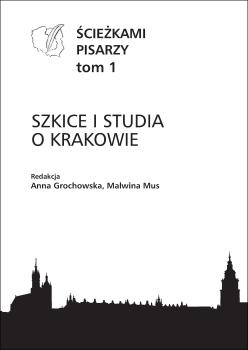Ukraińscy pisarze na krakowskim bruku – polsko-ukraińskie przyjaźnie i fascynacje literackie przełomu XIX/XX wieku .......... 21
Streszczenie
UKRAINIAN WRITERS ON THE CRACOVIAN STREET. POLISH-UKRAINIAN FRIENDSHIP AND LITERARY FASCINATION IN THE LATE 1800S AND IN THE BEGINNING OF THE 1900S
The article presented the interaction between Ukrainian and Polish writers, who were living in Cracow at the turn of the 20th century. Cracow in the late 19thand early 20th century was a city in which resided a large group of Ukrainian poets, writers and artists, who constituted themselves as a group of the literary Moloda Muza. This artistic movement developed under the influence of the ideals of the Młoda Polska and personal contacts with Cracow artists (including friendship of Stanisław Przybyszewski with Wasyl Stefanyk). Many of the artists associated with the Młoda Muza were guests of the Ukrainian professor at the Jagiellonian University, Bohdan Łepki. Among the Ukrainian Impressionist artists who worked or stayed in Cracow at the beginning of the 20th century one may mention the novelist Wasyl Stefanyk (he studied medicine in Cracow). Stefanyk wrote short stories, which were translated into Polish, analyzed and popularized by Cracow’s writers, critics, scholars and publishers, his texts were published in “Życie”, “Czas Krakowski”, “Świat Słowiański”. A special role is played by his contacts with Władysław Orkan, who explained him to his contemporary Ukrainian writers and released two particularly important collections – Młoda Ukraina (1908) and the Antologia współczesnych poetów ukraińskich (1910).





